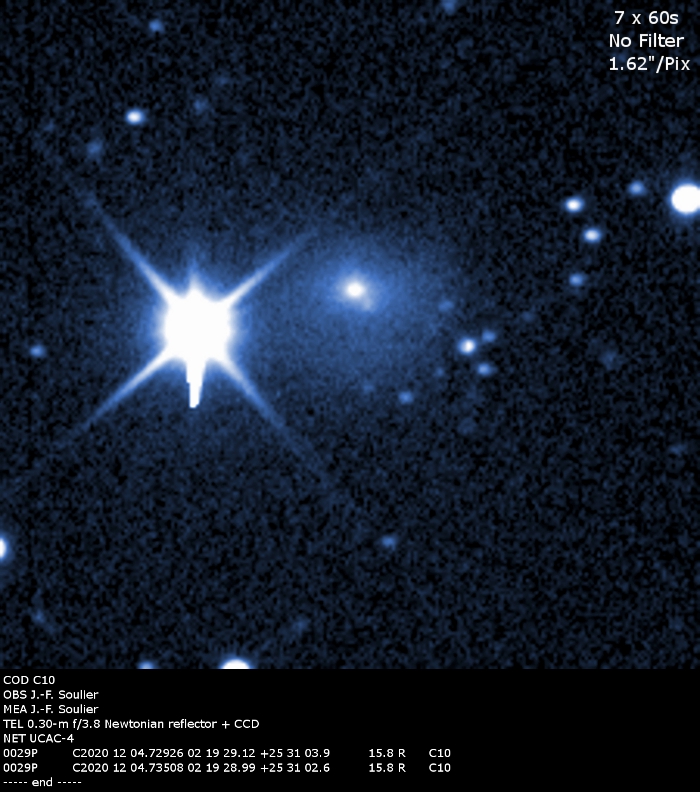Thanks for these and for your 2020 12 02 observations. I have been analysing the velocity profiles across the outburst coma in 2.0-m images taken 0.79 days after YOUR outburst of 2020 11 19 and also the velocity profile in 1.0-m images taken 5.38 days after the outburst. Both sets are very good quality. Am trying to understand the significance of the findings - it seems that between these two sets of data, about 15% of the ejecta from the very centre of the pseudo-nucleus has disappeared, i.e. it must have fallen back onto the nucleus. In the 2.0-m image at the first epoch, there appears to be a stellar-like PSF that is too bright to be explained as an image of the nucleus itself (see image attached - you have this already). If verified, this will be the first time we have detected this fall-back happening as part of a strong outburst. The data are very convincing. Interestingly, the analysis of the fade in the lightcurve over the same interval from all amateur observations yields an anomalous velocity profile as well - unless we invoke the same conclusion to explain it. There are therefore three independent sets of data pointing to the same explanation. Then, a second strong outburst was observed 5.69 +/-0.24 days after the first event. Conclusion: the large amount of ejecta falling back onto the nucleus provoked the second event. In one of my 2016 papers I described three types of outburst: strong, weak and triggered. We now, with this latest discovery, have seen both strong and weak outbursts that can be linked to fallback of ejecta triggering further outbursts. Fascinating, Richard => T300 Remote, France : Sans Filtre Rayon : 6.5" COD C10 OBS J.-F. Soulier MEA J.-F. Soulier TEL 0.30-m f/3.8 Newtonian reflector + CCD NET UCAC-4 0029P C2020 12 04.72926 02 19 29.12 +25 31 03.9 15.80R C10 0029P C2020 12 04.73508 02 19 28.99 +25 31 02.6 15.80R C10 ----- end ----- |

Page last updated: Sun 28 Apr 10:46:46 BST 2024